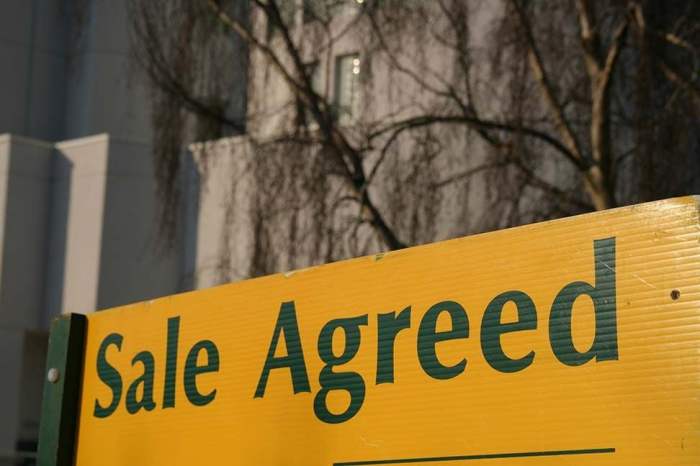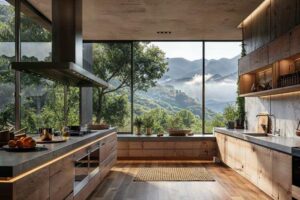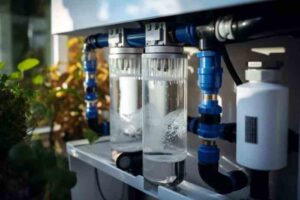
Cost to replumb a house 2025 unfolds a vital discussion for homeowners considering plumbing updates. As we dive into the financial aspects of replumbing, it’s essential to understand the various factors that influence costs, the types of materials available, and common issues that might prompt a replumb. This overview aims to provide clarity and guidance for anyone navigating this significant home improvement decision.
In recent years, the importance of reliable plumbing has never been more prominent, especially with the advancements in technology and design. Homeowners not only seek functionality but also aesthetic integration of plumbing systems into their homes, particularly in kitchens and bathrooms. Let’s explore how these elements come together in today’s market.
Cost to Replumb a House in 2025
Replumbing a house is a significant undertaking that often arises from issues related to outdated or damaged plumbing systems. In 2025, understanding the cost associated with replumbing is crucial for homeowners considering this investment. Various factors play a role in determining the overall expense, from materials used to the complexity of the job, and it’s essential to be well-informed before tackling such a project.Numerous factors influence the cost of replumbing a house.
These include the size of the home, the complexity of the plumbing layout, accessibility of pipes, and local labor rates. Additionally, the choice of plumbing materials can dramatically affect the total expense. Homeowners should consider the long-term benefits of different materials, which can range from basic copper to advanced PVC options. Below are some of the key factors contributing to replumbing costs:
- Home Size: Larger homes typically require more materials and labor, leading to higher costs.
- Type of Plumbing System: The existing plumbing structure influences how much replumbing is necessary.
- Labor Costs: Rates vary by region; urban areas may have higher labor costs than rural locations.
- Permitting Fees: Many localities require permits for plumbing work, adding to the overall cost.
- Accessibility: If pipes are difficult to reach, additional labor may be needed, increasing expenses.
Average Costs of Plumbing Materials in 2025
In 2025, various plumbing materials are available, each with distinct pricing and benefits. The choice of materials not only influences upfront costs but also impacts durability and maintenance expenses in the long run. Below is a breakdown of common plumbing materials and their average costs:
- PVC Pipe: Typically costs around $0.50 to $2.00 per linear foot, known for its lightweight and resistance to corrosion.
- PEX Pipe: Ranges from $0.50 to $3.00 per linear foot, valued for its flexibility and ease of installation.
- Copper Pipe: Priced at approximately $2.00 to $5.00 per linear foot, recognized for its longevity and reliability.
- Galvanized Steel Pipe: Costs between $2.00 and $5.00 per linear foot, but is less commonly used due to corrosion issues.
- CPVC Pipe: Generally costs between $0.75 and $2.50 per linear foot, similar to PVC but can handle higher temperatures.
Common Plumbing Issues Necessitating Replumbing
Several plumbing issues can arise that necessitate replumbing, often leading to increased costs if not addressed in a timely manner. Understanding these issues helps homeowners prepare for potential expenses. Some of the most common plumbing problems include:
- Pipe Corrosion: Affects older homes with galvanized pipes, leading to leaks and water quality issues.
- Frequent Leaks: Indicate potential failures in the plumbing system, which can lead to costly water damage.
- Low Water Pressure: Often caused by mineral buildup or pipe blockages, may require extensive replumbing.
- Old or Outdated Materials: Homes with old plumbing may need entire systems updated to comply with current codes.
Replumbing is not just a necessary home improvement but an investment in the property’s future. Understanding the costs associated with various materials and potential plumbing issues can help homeowners make informed decisions about their replumbing projects.
Interior Design and Decorating
Replumbing a house is more than just a functional upgrade; it can significantly influence your interior design choices, especially in critical areas like kitchens and bathrooms. When considering the aesthetic elements of your home, understanding how plumbing updates can blend seamlessly with your design is essential. Renovations often necessitate plumbing changes, and these alterations can create new opportunities for enhancing the overall look and feel of your spaces.
An organized approach can help integrate plumbing updates into the overarching design aesthetic, ensuring that functionality and beauty coexist harmoniously.
Impact of Replumbing on Kitchen and Bathroom Design
When replumbing occurs, especially in kitchens and bathrooms, it can open up new design avenues. Here are some important considerations to keep in mind:
Layout Flexibility
Changing the location of sinks, dishwashers, or bathtubs allows for a fresh layout. For instance, moving a sink to a central island can create a more open and inviting kitchen space, while relocating a bathtub can make the bathroom feel more spacious.
Fixture Selection
With new plumbing, you can choose modern fixtures that complement your design style. Opting for sleek, minimalist faucets or vintage-inspired sinks can enhance your kitchen or bathroom’s personality.
Material Choices
Replumbing offers a chance to rethink materials. For example, if you’re upgrading your pipes, consider using copper or PEX, which can be hidden behind walls, allowing for more aesthetically pleasing surfaces and finishes.
Thematic Cohesion
New plumbing can help you stay consistent with your chosen design theme. For example, if you’re aiming for a rustic farmhouse look, select fixtures that reflect that style, integrating them into the overall decor.When planning plumbing during major home renovations, it’s vital to think about these design aspects. Proper planning ensures that plumbing work aligns with the intended aesthetics while also being functional.
“Successful interior design is not just about style; it’s about creating a cohesive environment where function and aesthetics work together seamlessly.”
Design considerations should also include the following elements:
Colors and Finishes
Select colors and finishes for fixtures that enhance the chosen palette of your kitchen or bathroom. Brushed nickel, gold, or matte black are popular choices that can complement various design themes.
Lighting Integration
Consider how plumbing elements will interact with lighting. Under-sink lighting or illuminated mirrors can draw attention to your new fixtures while enhancing the overall ambiance of the space.
Smart Technology
Integrating smart plumbing solutions, such as touchless faucets or water-efficient fixtures, can add modern convenience while aligning with contemporary design trends.By strategically planning plumbing updates, homeowners can ensure that their renovations enhance both the functionality and aesthetic appeal of their interiors, creating spaces that are not only beautiful but also highly practical.
Kitchen Improvements
The kitchen is often considered the heart of the home, where family members gather and culinary creativity takes flight. One of the most critical aspects of kitchen renovations involves plumbing, which plays a pivotal role in enhancing both functionality and design. As kitchen improvement projects evolve, understanding the connection between plumbing and these enhancements becomes essential for achieving a successful remodel.Modern plumbing technologies, such as smart fixtures and eco-friendly systems, can significantly enhance kitchen functionality and aesthetics.
These advancements not only improve water efficiency but also offer convenience and energy savings. For instance, touchless faucets can minimize mess and promote cleanliness, while advanced water filtration systems ensure that clean, great-tasting water is readily available for cooking and drinking. By integrating these technologies, homeowners can create a kitchen that is not just visually appealing but also aligns with modern living standards.
Essential Plumbing Upgrades for a Kitchen Remodel
When planning a kitchen remodel, several plumbing upgrades are vital to consider. These enhancements can improve efficiency and support modern kitchen designs, ensuring that the space meets contemporary needs. Here are some essential plumbing upgrades to enhance your kitchen:
- High-Efficiency Faucets: Installing water-saving faucets can reduce water consumption without sacrificing performance.
- Undersink Water Filtration Systems: These systems provide purified water directly from the tap, perfect for cooking and drinking.
- Smart Faucets and Appliances: Touchless faucets and appliances with smart technology offer convenience and improve the overall utility of the kitchen.
- Upgraded Drainage Systems: Enhanced drainage solutions can prevent clogs and ensure efficient water flow, essential for modern kitchen activities.
- Re-piping with PEX or Copper: Upgrading old pipes to modern materials like PEX or copper improves durability and water quality.
- Proper Ventilation for Gas Appliances: Installing adequate ventilation systems is crucial for safety and efficiency when using gas stoves or ovens.
Incorporating these plumbing upgrades not only ensures that the kitchen operates smoothly but also adds long-term value to the home. By addressing plumbing needs during a remodel, homeowners can create a space that is both functional and stylish, ready to handle the demands of modern cooking and entertaining.
Landscaping Outdoor Decorating
Creating a vibrant outdoor living space can significantly enhance the aesthetic appeal and functionality of your property. One of the often-overlooked aspects of landscaping is how outdoor plumbing systems, such as irrigation, drainage, and decorative water features, play a crucial role in the overall design. Understanding the symbiotic relationship between landscaping and plumbing can lead to a more cohesive and enjoyable outdoor environment.Outdoor plumbing systems directly impact the health and appearance of landscaping by providing essential water supply and drainage solutions.
Proper irrigation systems ensure that plants receive adequate hydration, contributing to their growth and vitality. Additionally, well-designed drainage systems prevent water accumulation that can lead to soil erosion and plant diseases. Incorporating plumbing features into landscaping not only serves practical purposes but can also become focal points that elevate the design of outdoor spaces.
Incorporating Plumbing Features into Landscaping
Integrating plumbing elements into landscape design can create stunning visual appeal while enhancing the functionality of the outdoor space. Here are some creative ideas that fuse plumbing with landscaping:
- Fountains: Installing a decorative fountain can serve as an eye-catching centerpiece in your garden. Fountains can create a soothing ambiance with the sound of flowing water while providing a habitat for local wildlife.
- Irrigation Systems: Automated drip or sprinkler systems ensure that your plants receive the right amount of water at the right time, promoting healthy growth and reducing water waste.
- Rain Gardens: These landscaped areas are designed to collect and absorb rainwater runoff from impervious surfaces. They support native plants while effectively managing water drainage.
- Waterfalls: A naturalistic waterfall can transform your landscape into a serene oasis, providing both aesthetic value and beneficial moisture for surrounding plants.
- Garden Ponds: Installing a pond not only enhances the beauty of your yard but also provides opportunities for aquatic plants and fish, creating a balanced ecosystem.
Maintaining outdoor plumbing installations is crucial in preserving the health of your landscaping. Regular checks and maintenance can prevent leaks and clogs that might hinder irrigation efficiency or damage the surrounding area. Here are some essential maintenance tips for outdoor plumbing systems:
- Inspect Regularly: Conduct routine inspections of irrigation lines, drains, and water features to identify any signs of wear or damage.
- Winterization: Preparing your plumbing systems for winter can prevent freezing and bursting pipes. Drain and insulate exposed lines before the cold weather sets in.
- Cleaning Filters: Regularly clean filters and nozzles in irrigation systems to ensure optimal water flow and prevent blockages.
- Monitor Water Usage: Keep an eye on your water bills and usage patterns. Unexplained increases may indicate leaks that need immediate attention.
“Integrating plumbing into landscaping is not just about aesthetics; it’s about creating a harmonious outdoor environment that thrives.”
Home Lighting

In modern home design, lighting plays a crucial role in enhancing functionality and aesthetics, especially in areas like kitchens and bathrooms. However, the implications of plumbing on lighting design often go overlooked. Understanding these relationships can lead to more effective and innovative home decor solutions, ensuring that both plumbing and electrical installations complement each other seamlessly.The design of plumbing and the arrangement of lighting fixtures must be carefully planned together.
For instance, in kitchens and bathrooms, where water and electricity coexist, adequate precautions must be taken to ensure safety and efficiency. This is particularly important in areas that require specific lighting, such as under-cabinet lights or vanity mirrors, which should be coordinated with plumbing fixtures.
Integration of Plumbing Fixtures into Home Lighting Design
Plumbing fixtures can serve as innovative elements within a home lighting scheme. By creatively integrating these fixtures, homeowners can achieve unique and functional lighting solutions. Here are some ways to incorporate plumbing into your lighting design:
- Statement Light Fixtures: Use large, decorative plumbing pipes or fittings as part of light fixtures. For example, an industrial-style light made from copper pipes can add character while providing illumination.
- Water-Safe Lighting: In bathrooms, consider waterproof lighting options integrated into plumbing installations, such as lights mounted directly above a shower head or within a bathtub’s structure.
- Task Lighting in Kitchens: Position under-cabinet lighting close to sink areas to illuminate workspaces while ensuring that plumbing is managed efficiently. This improves visibility while cooking and cleaning.
- Accent Lighting: Use plumbing fixtures creatively to Artikel architectural features or highlight specific areas in a room, such as a kitchen island or a bar area.
Proper consideration of plumbing layout is vital when planning electrical installations. The positioning of plumbing pipes can restrict or dictate where electrical wiring can be safely placed, thereby influencing the overall lighting design. Here are key factors to keep in mind:
“Effective lighting design considers both plumbing and electrical layouts to ensure functionality and safety.”
When mapping out your lighting scheme, consider these points:
- Clearances: Ensure that there are no conflicts between plumbing pipes and electrical wiring by maintaining sufficient clearance around fixtures.
- Water-Proofing: Use water-resistant materials for electrical components located near plumbing fixtures to avoid potential hazards.
- Access Points: Design layouts that allow easy access to plumbing for maintenance without disrupting electrical installations.
By thoughtfully integrating plumbing considerations into lighting design, homeowners can enhance both the functionality and visual appeal of their spaces, leading to beautifully illuminated and safe environments.
New Construction
When embarking on new home construction, integrating plumbing effectively is crucial for functionality and compliance. Plumbing plays a vital role in any home, affecting everything from water supply to waste management. Understanding the nuances of plumbing during the construction phase can save homeowners time and money, while also ensuring a comfortable living environment.An essential aspect of plumbing in new builds involves adhering to local building codes and regulations.
These guidelines dictate everything from pipe materials to installation methods, ensuring that plumbing systems are safe, efficient, and environmentally friendly. Familiarizing yourself with these codes early in the construction process is essential to avoid costly modifications later on.
Building Codes and Regulations
Building codes set the standards for plumbing systems within new constructions. These codes can vary significantly from one location to another, so it’s important to consult local regulations to ensure compliance. Key points include:
- Materials: Codes often specify which materials can be used, such as copper, PVC, or PEX, to ensure durability and safety.
- Pipe Sizing: Correct sizing of pipes is crucial for maintaining adequate water pressure and flow rates.
- Ventilation: Proper venting is required to maintain air pressure in the plumbing system and prevent odor issues.
- Drainage: Regulations dictate the slope of drainage pipes to ensure proper flow and prevent blockages.
Understanding these regulations is vital to avoid fines and ensure a smooth construction process, ultimately leading to a safe and efficient plumbing system.
Choosing the Right Plumbing Contractor
Selecting a qualified plumbing contractor is fundamental to the success of your new construction project. The right contractor not only has the technical expertise but also understands the local codes and can navigate the permitting process effectively. Consider the following factors when choosing a plumbing contractor:
- Licensing and Insurance: Ensure that the contractor holds valid licenses and insurance to protect against potential liabilities.
- Experience with New Builds: Look for contractors who specialize in new construction, as they will be familiar with the intricacies involved.
- Reviews and References: Check online reviews and ask for references to gauge the contractor’s reliability and quality of work.
- Detailed Estimates: Obtain detailed quotes that Artikel all costs associated with plumbing work to avoid any surprises later.
By focusing on these key aspects, homeowners can ensure that their plumbing contractor is well-equipped to handle the specific demands of new home construction.
Investing time in selecting the right plumbing contractor will pay off in the long run, leading to a more efficient and hassle-free plumbing system.
Home Painting
When planning a home renovation, especially after plumbing upgrades, selecting the right paint and finishes can significantly enhance both aesthetics and functionality. The choice of color and texture not only reflects personal style but also complements the overall design of updated spaces. With the right approach, paint can serve as a protective layer while transforming the visual appeal of your home.Plumbing upgrades can dictate certain aspects of your painting project, particularly in moisture-prone areas like bathrooms and kitchens.
The installation of new plumbing fixtures might necessitate the use of specific paint types that can withstand humidity and resist mold. Additionally, finishes should be chosen with regard to the proximity of plumbing systems to ensure durability and easy maintenance.
Influence of Plumbing on Paint Choices
Understanding how plumbing updates affect paint selections is crucial in maintaining a cohesive and durable interior. Here are some vital considerations when choosing paint after plumbing renovations:
- Moisture Resistance: Bathrooms and kitchens, where plumbing is prevalent, require moisture-resistant paints. Look for products labeled as “bathroom paint” or “kitchen paint,” which are formulated to resist mold and mildew.
- Durability: High-traffic areas near plumbing fixtures, like laundry rooms, benefit from washable and scrubbable finishes. Satin or semi-gloss paints are often recommended for these spaces.
- Color Coordination: New plumbing fixtures can inspire new color palettes. A chrome faucet or a vintage sink can influence adjacent wall colors, allowing for a seamless design flow throughout the space.
Protecting Plumbing During Painting Projects
Protecting plumbing fixtures during painting is essential to prevent damage and preserve the integrity of your upgrades. Key strategies include:
- Covering Fixtures: Use painter’s tape and plastic sheeting to shield sinks, faucets, and other plumbing elements from paint splatters and spills.
- Ventilation: Ensure adequate ventilation when painting near plumbing to prevent moisture buildup that could affect plumbing components.
- Clean-Up: Have a dedicated cleaning station to quickly address any paint spills that might land on plumbing fixtures or surfaces.
Innovative Painting Techniques for Renovated Spaces
Incorporating innovative painting techniques can greatly enhance the appearance of spaces with updated plumbing. A few techniques that work particularly well include:
- Accent Walls: Highlight the area around new plumbing fixtures with a bold accent wall, using colors that complement the overall design.
- Textured Finishes: Applying textured finishes can add depth and interest, especially in laundry rooms or kitchens where plumbing is visible.
- Stencils and Patterns: Use stencils to create unique designs around plumbing fixtures, adding a personal touch to bathrooms and kitchens.
Patio Deck
Creating a patio deck can significantly enhance the outdoor living experience, serving as an extension of your home. When designing this space, it’s important to consider plumbing, as it can influence both the aesthetic and functionality of the area. Proper planning ensures that your outdoor environment is not only beautiful but also practical, especially when incorporating features that rely on plumbing.Plumbing considerations play a crucial role in the overall design of a patio deck.
Water supply and drainage systems must be strategically integrated to accommodate any features that require plumbing, such as sinks and barbecues. These installations not only add convenience but also elevate the outdoor experience. For instance, an outdoor sink makes cleaning up after meals or gardening tasks a breeze, while a barbecue area can become the centerpiece for family gatherings.
Incorporating Plumbing Features into Patio Designs
When planning the layout of your patio deck, think about how plumbing features can enhance its usability. Here are some ideas for incorporating these elements:
- Outdoor Sinks: Installing a sink on your patio allows for easy food preparation and cleanup, particularly if you enjoy outdoor cooking.
- Barbecues with Water Access: A built-in barbecue unit with a nearby sink can streamline cooking and make entertaining guests more enjoyable.
- Refreshment Stations: Consider adding a small bar area with a sink for mixing drinks, making it a perfect spot for summer parties.
Maintaining plumbing fixtures on your patio is essential to ensure they remain functional and visually appealing. Regular maintenance not only prolongs the life of your fixtures but also prevents costly repairs. Here are some guidelines to keep your outdoor plumbing in top shape:
Guidelines for Maintaining Plumbing Fixtures on Patios
To maintain the efficiency and appearance of your patio plumbing fixtures, follow these practices:
- Regular Inspections: Check for leaks or signs of wear and tear, especially after harsh weather conditions.
- Winterization: In colder climates, be sure to drain outdoor plumbing fixtures before winter to prevent freezing and cracking.
- Cleaning and Care: Clean sinks and fixtures regularly to prevent buildup of grime and ensure proper drainage.
- Professional Servicing: Schedule regular check-ups with a plumbing professional to catch potential issues early.
Incorporating plumbing features into your patio deck can dramatically improve its functionality and enjoyment while maintaining these fixtures is vital for long-term use. By thoughtfully designing and caring for your outdoor space, you can create a comfortable and inviting atmosphere perfect for entertaining and relaxation.
Pest Control
Pest control is a crucial aspect of maintaining a healthy home environment, especially when it comes to plumbing issues. Understanding how plumbing failures can lead to pest infestations is essential for homeowners looking to protect their property and investment. This section delves into the relationship between plumbing problems and pest control, detailing prevention strategies and associated costs.Plumbing issues often create ideal conditions for pests to thrive.
Leaking pipes, damp areas, and standing water not only damage the structure of a home but also attract various pests, such as termites, cockroaches, and rodents. For instance, a slow leak under the sink might provide a consistent water source for cockroaches, while a broken sewer line can draw in rodents searching for food and shelter. Therefore, addressing plumbing issues promptly is not just about avoiding water damage; it’s also about preventing pest infestations.
Prevention Strategies for Plumbing-Related Pest Problems
Implementing effective prevention strategies is vital to mitigate the risk of pest problems arising from plumbing issues. Below are some key strategies to consider:
- Regular Plumbing Inspections: Schedule yearly plumbing inspections to identify leaks and potential issues before they escalate into larger problems. Early detection can prevent water damage and associated pest problems.
- Seal Cracks and Gaps: Inspect the foundation, walls, and windows for cracks or gaps where pests can enter. Use caulk or weather stripping to seal these openings effectively.
- Proper Drainage: Ensure that downspouts and gutters direct water away from the home. Standing water near the foundation can attract pests.
- Maintain Cleanliness: Keep areas around plumbing fixtures clean and dry. Regularly check for moisture and promptly clean up spills to deter pests.
- Fix Leaks Promptly: Address any leaks in plumbing immediately. Even small leaks can create a favorable environment for pests.
The costs associated with pest control measures related to plumbing failures can vary significantly depending on the severity of the infestation and the nature of the plumbing issue. Homeowners may face costs for pest inspection, extermination services, and repairs to plumbing systems. For instance, hiring a pest control professional may range from $100 to $500 based on the type of pest and the extent of the infestation.
Moreover, repairing plumbing leaks can cost anywhere from $150 for minor repairs to several thousand dollars for extensive water damage restoration.
Investing in preventative measures can save homeowners significant costs associated with pest infestations down the line.
By understanding the connection between plumbing issues and pest control, homeowners can take proactive steps to safeguard their homes against unwanted intruders and avoid the financial burden that comes with pest-related damages.
Home Plumbing

Maintaining a robust plumbing system is essential for any homeowner, as it plays a crucial role in the overall functionality and hygiene of the home. Regular upkeep can prevent costly repairs and ensure that water flows efficiently throughout the house. By focusing on key aspects of plumbing maintenance, homeowners can safeguard their investments and enhance the longevity of their plumbing systems.Regular plumbing inspections and updates are vital in identifying potential issues before they escalate into major problems.
Aging pipes, worn-out fittings, and mineral buildup can lead to leaks and water damage if not addressed promptly. Conducting periodic checks helps to maintain the integrity of the plumbing system, ensuring that everything operates smoothly and efficiently.
Plumbing Maintenance Checklist
A well-maintained plumbing system requires diligence and attention to detail. Below is a checklist for homeowners to follow for effective plumbing maintenance:
1. Inspect Pipes and Fittings
Regularly check for leaks, corrosion, and water stains on walls or ceilings.
2. Test Water Pressure
High water pressure can lead to pipe damage. Use a pressure gauge to check levels and adjust if necessary.
3. Clean Drainage Systems
Periodically use drain cleaners or natural solutions like vinegar and baking soda to prevent clogs.
4. Monitor Water Heater
Flush the water heater annually to remove sediment buildup, which can reduce efficiency.
5. Check Sump Pump
If applicable, test the sump pump at least once a year to ensure it functions correctly.
6. Inspect Fixtures
Regularly check faucets, toilets, and showerheads for leaks or drips, and replace worn washers as needed.
7. Watch for Unusual Sounds
Pay attention to any strange noises from pipes or fixtures, as these can indicate underlying issues.By following this checklist, homeowners can significantly reduce the risk of unexpected plumbing failures, creating a healthier and more comfortable living environment.
Routine plumbing maintenance not only preserves the value of your home but also enhances the quality of life for its inhabitants.
Home Remodeling
When considering a home remodeling project, the impact of plumbing should not be overlooked. Plumbing plays a critical role in both functionality and aesthetic appeal, influencing everything from layout to fixture selection. Updating plumbing during a remodel is not just about fixing leaks; it’s about enhancing the overall design and efficiency of your home.Plumbing updates can significantly affect overall remodeling projects, particularly in areas such as kitchens and bathrooms where water supply and drainage are essential.
Homeowners should ideally integrate plumbing updates to avoid future complications. Successful remodeling projects often showcase how effective plumbing updates can elevate a space. For example, a kitchen remodel that includes relocating a sink can improve workflow and aesthetics. This change allows for the installation of a beautiful island with additional seating and storage, transforming the kitchen into a modern hub of activity.
In bathrooms, moving or upgrading fixtures such as showers and toilets can enhance both functionality and comfort, creating a spa-like experience.
Trends in Plumbing Design
As homeowners embark on remodeling projects, several plumbing design trends are emerging that can add both style and efficiency. Understanding these trends is vital for creating a cohesive and modern space.The following trends in plumbing design are gaining popularity:
- Smart Plumbing Fixtures: Technology is becoming a staple in home design. Smart faucets and toilets that reduce water usage and provide convenience are trending.
- Industrial Style: Exposed pipes and fixtures with a polished finish are making a statement, adding an edgy, industrial vibe to homes.
- Water Efficiency: Eco-friendly plumbing solutions, such as low-flow fixtures and tankless water heaters, are becoming standard as homeowners seek to reduce their environmental impact.
- Customizable Showers: Walk-in showers with multiple shower heads and body sprays are becoming a popular choice for luxurious spaces.
- Colorful Fixtures: Brightly colored sinks and tubs are catching the eye, moving away from traditional white to create bold design statements.
When planning a remodel, integrating these plumbing design trends can enhance the overall aesthetic while optimizing functionality. Homeowners should prioritize plumbing updates as they choose materials and styles, ensuring that these elements harmonize with the new design and meet modern usability standards.
Final Summary
In conclusion, understanding the cost to replumb a house in 2025 is crucial for making informed decisions regarding home renovations and repairs. By considering the factors that affect plumbing costs, homeowners can better prepare for potential upgrades and maintenance. A well-executed replumbing project not only enhances the functionality of your home but can also elevate its overall design and value, ensuring a wise investment for the future.
Popular Questions
What is the average cost to replumb a house in 2025?
The average cost varies significantly based on the size of the house, the materials used, and the complexity of the plumbing system, but homeowners can expect prices to range from $5,000 to $15,000.
What factors influence the cost of replumbing?
Factors include the size of the home, the type of plumbing materials chosen, the extent of the plumbing issues, labor costs, and any necessary permits or inspections.
How can I choose the right plumbing materials?
Consider durability, cost, and compatibility with your home’s existing systems. Common materials include PVC, copper, and PEX, each with its advantages and drawbacks.
What plumbing issues typically require replumbing?
Common issues include frequent leaks, outdated pipes, low water pressure, and corroded or damaged lines that affect water quality and flow.
How can plumbing affect my home’s value?
Upgrading plumbing systems can enhance a home’s value by improving efficiency, reducing the risk of leaks, and providing better overall functionality, which is appealing to potential buyers.







